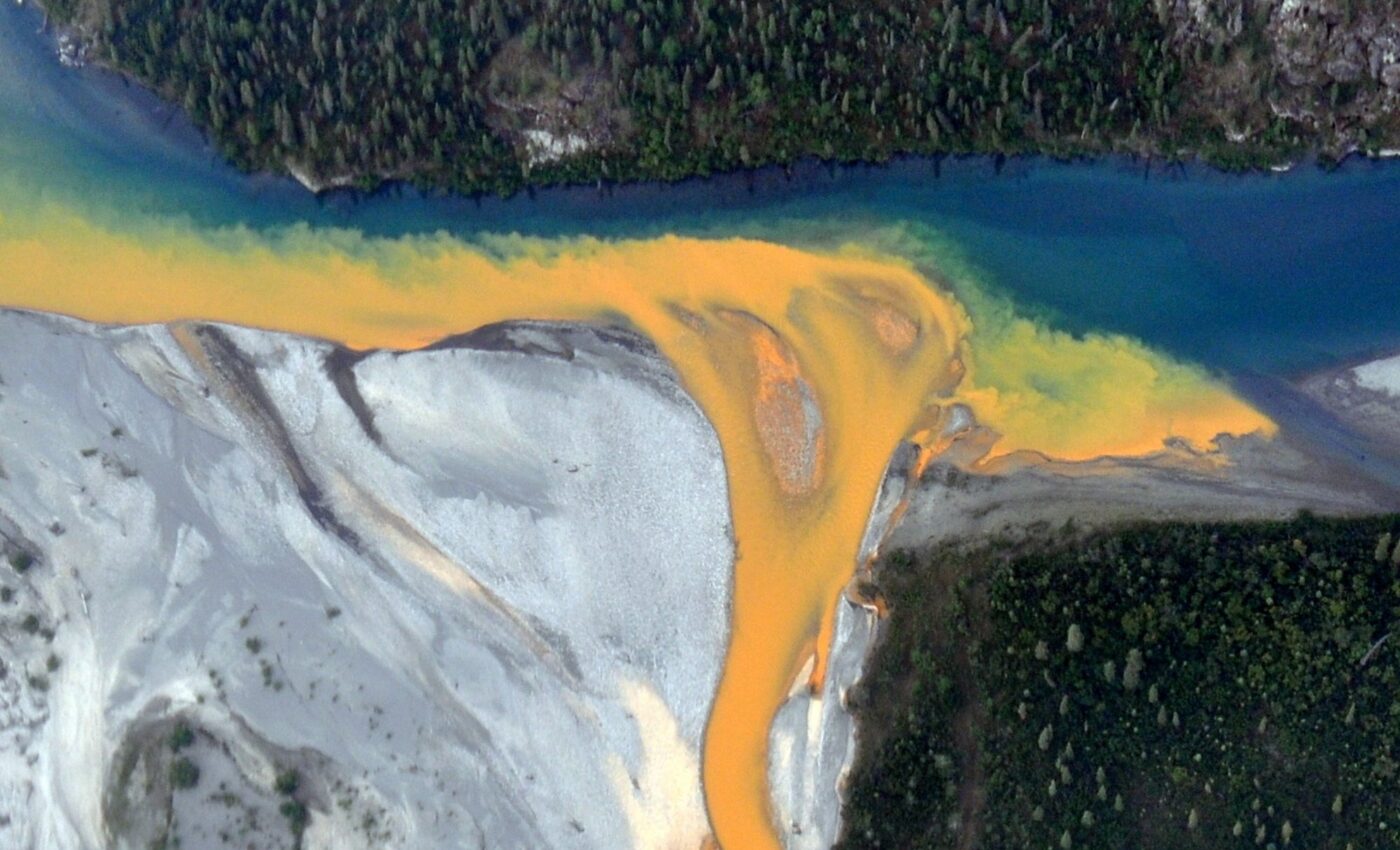
Alaska’s rivers are rusting and the changes are visible from space
By documenting and sampling 75 locations across Alaska’s Brooks Range, researchers have found that dozens of Alaska’s remote streams and rivers have turned from crystal clear blue to cloudy orange, likely due to minerals exposed by thawing permafrost.
This significant transformation of Alaska’s rivers could impact drinking water and fisheries in Arctic watersheds as the climate changes, according to a team of experts led by the National Park Service (NPS), the U.S. Geological Survey, and the University of California, Davis
Color changes in Alaska’s rivers
“The more we flew around, we started noticing more and more orange rivers and streams,” said lead author Jon O’Donnell, an ecologist at the NPS’ Arctic Inventory and Monitoring Network.
“There are certain sites that look almost like a milky orange juice. Those orange streams can be problematic both in terms of being toxic but might also prevent migration of fish to spawning areas.”
O’Donnell first noticed the issue in 2018 when he saw a river that appeared rusty, despite being clear the previous year. He began compiling locations and collecting water samples from the remote region, where helicopters are often the only way to access these rivers and streams.
River changes are visible from space
“The stained rivers are so big we can see them from space,” said senior author Brett Poulin, an assistant professor of environmental toxicology at UC Davis. “These have to be stained a lot to pick them up from space.” While the staining resembled acid mine drainage, no mines are near the impaired rivers.
One hypothesis is that thawing permafrost, which stores minerals, releases metal ores when exposed to water and oxygen, causing acid and metal release. “Chemistry tells us minerals are weathering,” Poulin explained. “Understanding what’s in the water is a fingerprint as to what occurred.”
Metals are changing the colors of Alaska’s rivers
The affected rivers are on federal lands managed by the Bureau of Land Management, Fish and Wildlife Service, and NPS, including Gates of the Arctic and Kobuk Valley national parks. Poulin and Ph.D. candidate Taylor Evinger analyzed initial samples and collected more in August, with additional samples taken in June and July. This year, they will conduct three more sampling trips during the summer.
Some water samples had a pH of 2.3, compared to an average pH of 8, indicating highly acidic conditions that release metals such as iron, zinc, nickel, copper, and cadmium. “We see a lot of different types of metals in these waters,” Evinger said. “One of the most dominant metals is iron. That’s what is causing the color change.”
Implications of the water changes
While O’Donnell first noticed changes in 2018, satellite images have shown stained waters dating back to 2008. “The issue is slowly propagating from small headwaters into bigger rivers over time,” he said. “When emergent issues or threats come about, we need to be able to understand them.”
The researchers are in the second year of a three-year grant aimed at understanding the water changes across Alaska’s rivers, modeling other at-risk areas, and assessing implications for drinking water and fisheries.
The problem affects habitat, water quality, and ecological systems, turning healthy areas into degraded habitats with fewer fish and invertebrates. If rural communities rely on these rivers for drinking water, they may eventually need treatment, and local fishing stocks could be impacted.
“There’s a lot of implications,” said O’Donnell. “As the climate continues to warm, we would expect permafrost to continue to thaw and so wherever there are these types of minerals, there’s potential for streams to be turning orange and becoming degraded in terms of water quality.”
More research is needed to understand whether rivers and streams can recover, possibly after cold weather promotes permafrost recovery. “I think there will be a lot more detailed work to follow up to address some of the uncertainties that we currently have,” O’Donnell concluded.
The study is published in the journal Nature Communications: Earth & Environment.
Image Credit: Ken Hill / National Park Service
Video Credit: UC Davis CAES
—–
Like what you read? Subscribe to our newsletter for engaging articles, exclusive content, and the latest updates.
Check us out on EarthSnap, a free app brought to you by Eric Ralls and Earth.com.
—–













